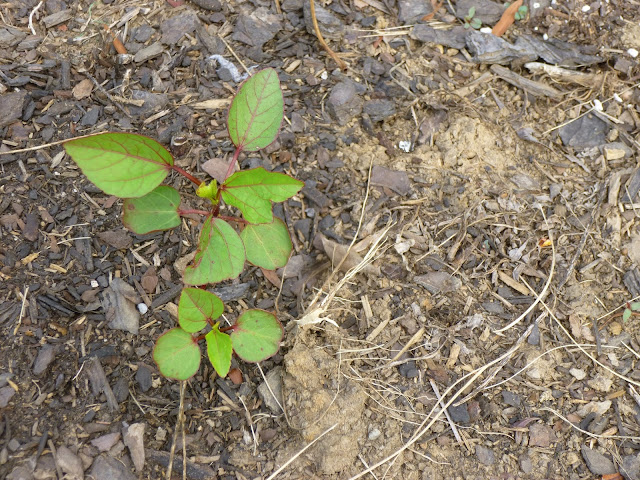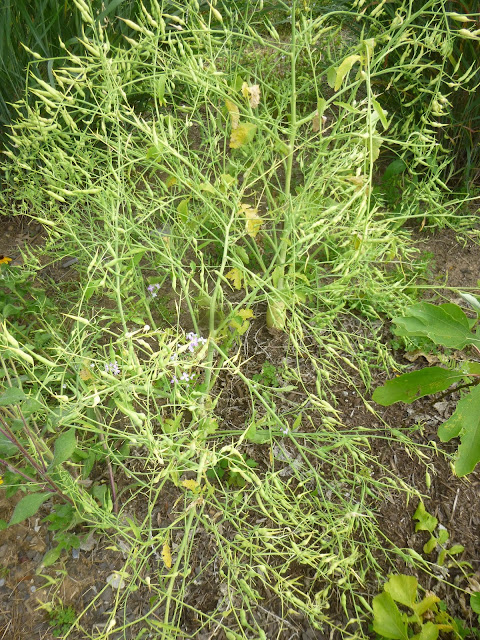In my first year or two of gardening, I tried growing a lot of veggies in our solid clay soil.
Frustrated by my lack of success, I mostly gave up and focused on ornamentals.
Recently though, I've started tiptoeing my way back into growing food.
I've had some fair success with basil - including a couple of volunteer basil plants the last couple of years.
Last fall and again this spring, I planted daikon radishes (Raphanus sativus) from Sow True Seed. This crop plays multiple roles - the leaves function as a cover crop, the roots are edible, the seedpods are edible and any roots left in place should hopefully decay and thus work as a no-till soil amendment. The fall crop did OK last year despite a drought and the spring crop this year did even better, producing good-sized roots and literally thousands of seedpods.
I ate some of the pods (found I liked them best raw), but ultimately ended up just composting most of them. I'm allowing the pods to mature on some of the biggest roots to save seed and/or let them naturalize a bit.
Meanwhile, as the radishes bolt and fade in the summer heat, I've started some 'Southern Brown Sugar' cowpeas (Vigna unguiculata) - also from Sow True Seed - one of my favorite seed companies!) for the first time.
I'm very impressed with the germination on these seeds. I think almost all my seeds sprouted in under a week and seem to be off to a strong start!
 |
| Cowpeas looking good so far! |
And then there's the tropical roselle (Hibiscus sabdariffa), which I sowed in the garden about a month ago. Germination was a bit slow on these and the seedlings are fairly slow-growing. I'm a little worried that I should have started them indoors and that they won't have time to mature and flower in a single season. (I believe they're actually perennials in zone 9 and warmer, but they'll almost certainly behave like annuals here in zone 6-7.)
To read about roselle's edible uses, you can check out this publication from Purdue University.
 |
| Grow strong, little hibiscus! |

